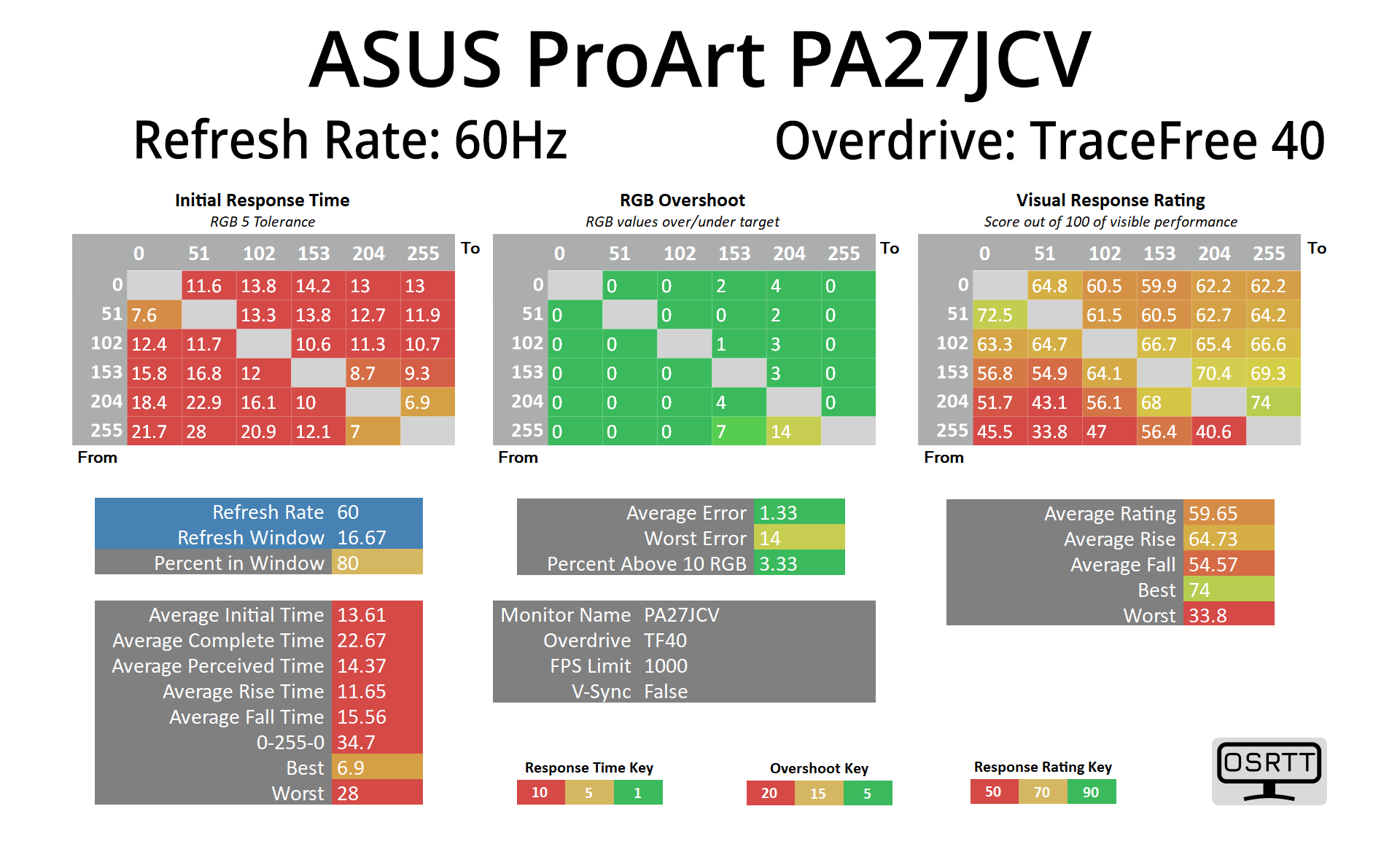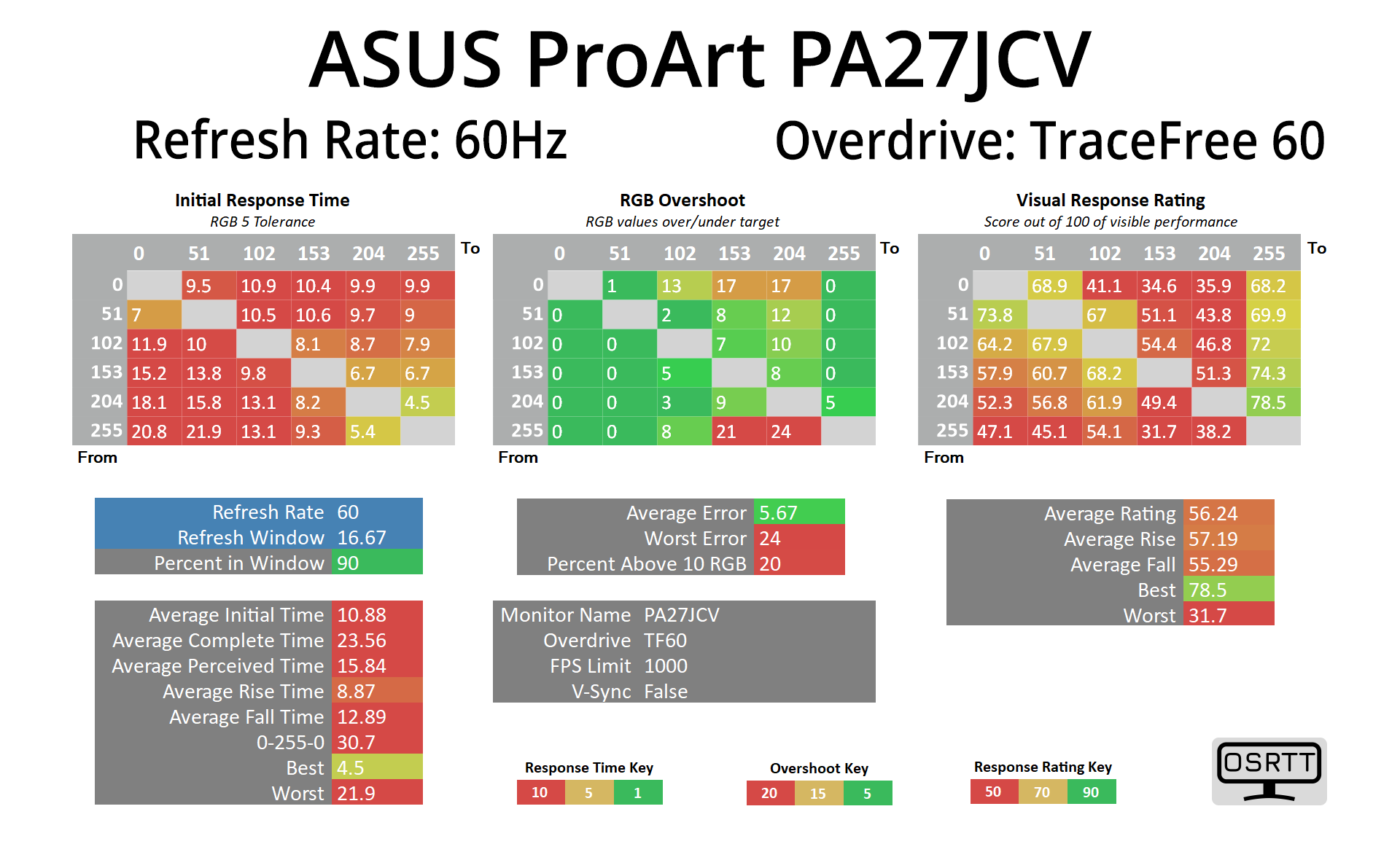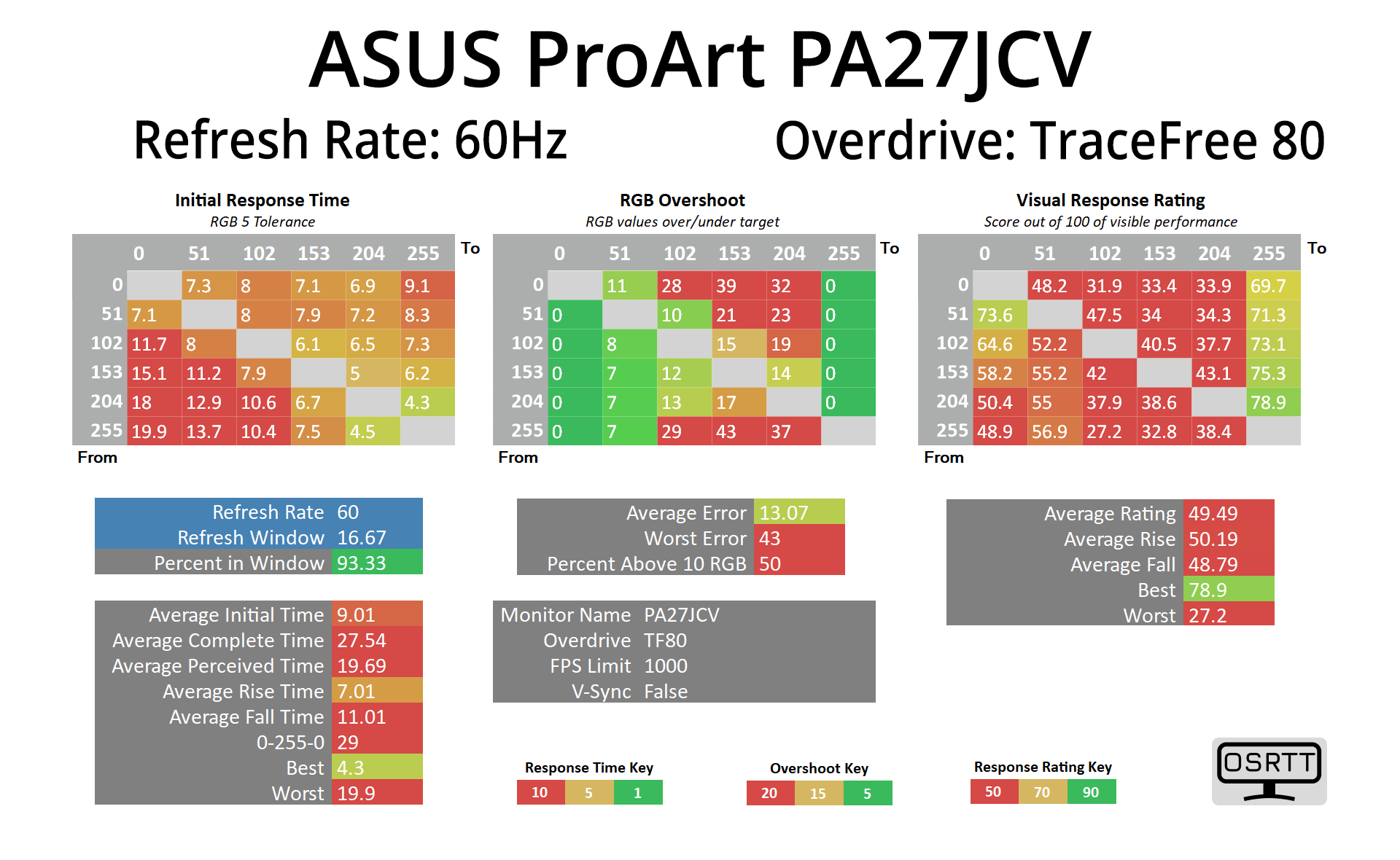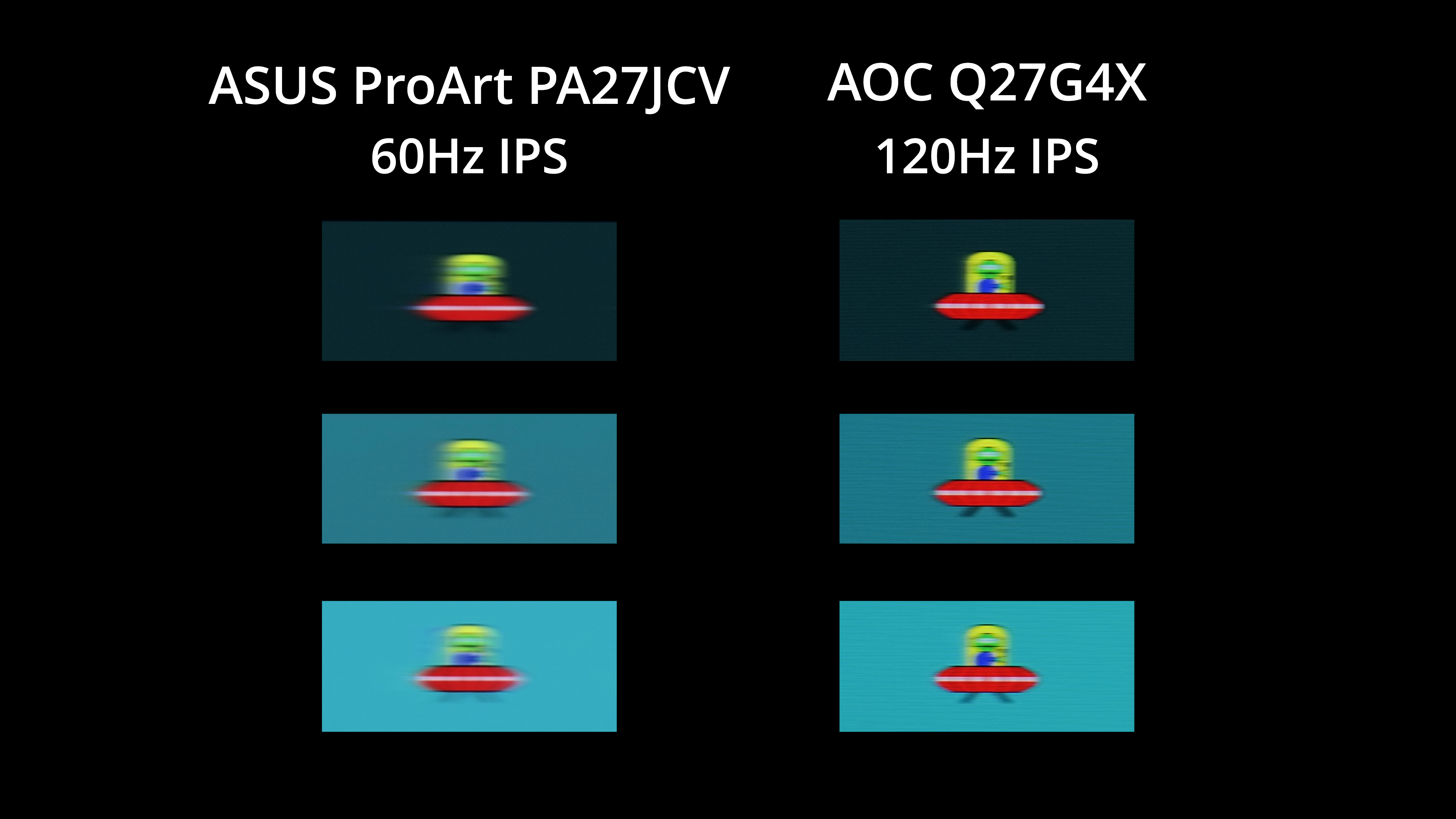Monitor response time testing is a new addition to our reviews, where we use the Open Source Response Time Tool (OSRTT), developed by TechTeamGB. This measures grey-to-grey response times and presents the results in a series of heatmaps, the style of which you may be familiar with from other reviews.
Initial Response Time is the time taken for the panel to transition from one colour to another, where lower values are better. We present the initial response time, so overshoot is not taken into account and is measured separately. We use a fixed RGB 5 tolerance for each transition.
Overshoot is the term given for when a monitor's transition exceeds or goes beyond its target value. So if a monitor was meant to transition from RGB 0 to RGB 55, but it hits RGB 60 before settling back down at RGB 55, that is overshoot. This is presented as RGB values in the heatmaps – i.e. how many RGB values past the intended target were measured.
Visual Response Rating is a metric designed to ‘score' a panel's visual performance, incorporating both response times and overdrive. Fast response times with little to no overshoot will score well, while slow response times or those with significant overshoot will score poorly.
We test the PA27JCV at 60Hz. ASUS calls overdrive ‘Trace Free' and offers settings of 0, 20, 40, 60, 80, and 100. We tested settings 40, 60, and 80.
Clearly, the PA27JCV is a professional monitor and not something aimed at gamers. However, I still thought it would be interesting to measure response times. Out of the box, the screen defaults to the Trace Free 60 setting, and I'd say that is the best one to use. It's not particularly fast, with an average response time of 10.88ms, but that's still well inside the 16.67ms window needed for 60Hz compliance, and it has minimal overshoot. The Trace Free 80 setting is only slightly faster, averaging 9.01ms, but the overshoot becomes noticeable at this setting.
We did get a request to include an example of motion clarity, given the PA27JCV is only a 60Hz refresh. Some professional monitors are now making the switch to 120Hz, and while I haven't reviewed any of those, I did run a quick test on the AOC Q27G4X, a budget 1440p 180Hz IPS screen (though I ran it at 120Hz for the purposes of this test).
As you can see, there is a fair amount of motion blur visible from the PA27JCV, as we'd expect. The Q27G4X looks substantially clearer. Of course, you can argue as to whether or not a professional screen like the ProArt needs a refresh above 60Hz, and it may not be a factor for many considering this type of screen, but we thought it was worth including the comparison so you can make your own decision.
 KitGuru KitGuru.net – Tech News | Hardware News | Hardware Reviews | IOS | Mobile | Gaming | Graphics Cards
KitGuru KitGuru.net – Tech News | Hardware News | Hardware Reviews | IOS | Mobile | Gaming | Graphics Cards






